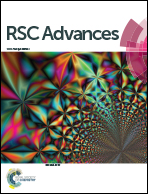A novel artificial red blood cell substitute: grafted starch-encapsulated hemoglobin
Abstract
Artificial red blood cells were prepared by encapsulating hemoglobin (Hb) with long chain fatty acid grafted potato starch by self-assembly and we evaluated their physical, chemical and biological properties, and therapeutic effects in a rat hemorrhagic shock model. The starch was grafted with fatty acid in DMSO using potassium persulphate as catalyst and hemoglobin was encapsulated into the grafted starch polymers. The encapsulation efficiency was hemoglobin/polymer ratio, time course and ultrasound power dependent. The final products were soluble and spherical with average diameters of about 250 nm. The nanoparticles induced no complement C3 component activation when cocultured with murine serum. Meanwhile, no hemolysis and procoagulative phenomena were observed in vitro. When the nanoparticles were injected into the mice via the tail vein, total platelet counts were not reduced. The rats with hemorrhagic shock recovered and the histological structures of the main organs remained unchanged after artificial RBC supplement. Taken together, we prepared a novel and satisfactory artificial red blood cells with good oxygen carrying capacity.


 Please wait while we load your content...
Please wait while we load your content...